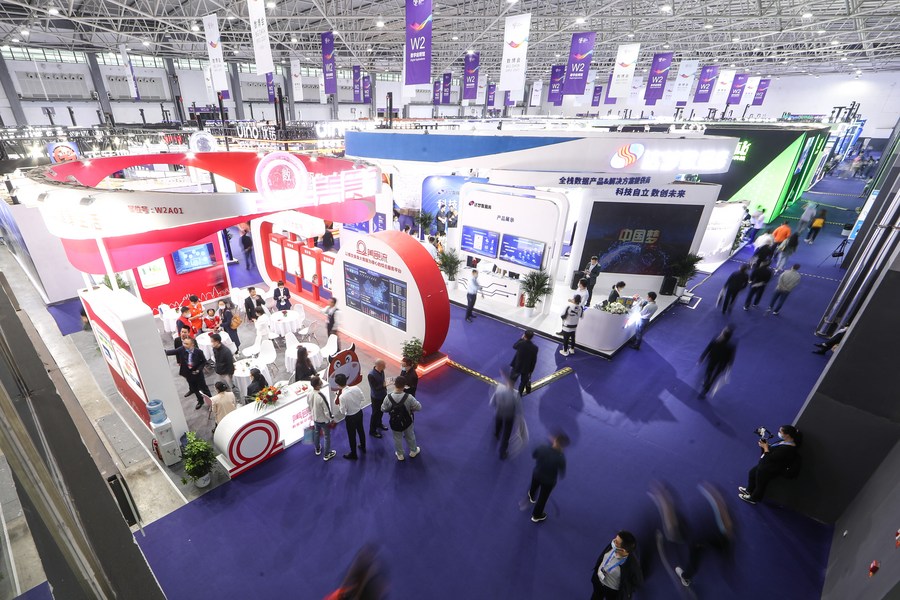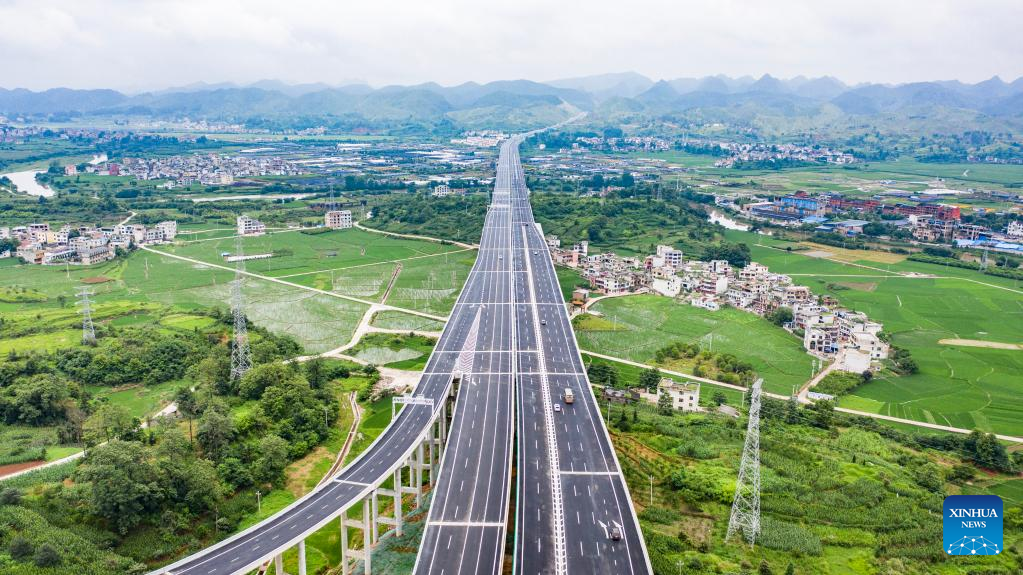
By Wang Yiming
Over the past decade, southwest China's Guizhou province has experienced rapid growth, explored a new development path and get off to a good start in the 14th Five-Year Plan period (2021-2025).
In February, the State Council issued a guideline supporting Guizhou's leading efforts in the country's pursuit of large-scale development of China's western regions in the new era. The guideline clarified the province's strategic role as a demonstration area for comprehensive reform in the development of China's western regions and encouraged it to blaze new trails for higher-quality economic development.

Deepen reform, expand opening-up and bolster the real economy
On Dec. 24, 2021, the battery giant Contemporary Amperex Technology Co. Ltd. (CATL) began work on a new project in the Gui'an New District of Guizhou province, which is set to become one of the company's top 10 manufacturing bases worldwide. CATL will help Guizhou improve its new energy battery and material industries.
The project is just one example of how Guizhou is accelerating new industrialization, expanding emerging industries, and fostering new growth drivers. Last year, the province introduced more than 1,000 leading enterprises.
In addition, Guizhou has made steady progress in developing its open economy. More than 300 foreign trade firms there can enjoy the benefits brought about by the Regional Comprehensive Economic Partnership. In 2021, the total volume of foreign trade of the province increased by over 30%.
The province has improved government services, explored new forms of foreign trade and new business models, and also strived to create a market-oriented, law-based and open business environment.
Attract talents, promote industrial transformation and technological innovation
Guizhou Aviation Technical Development Co. Ltd. is one of the first batch of China's "little giant" enterprises — innovative small and medium-sized enterprises (SMEs) — and its products have been used in more than 70 models of aero engines at home and abroad. Similar SMEs are developing rapidly in the province. At present, Guizhou boasts 50 "little giant" enterprises at the national level and 139 at the provincial level, which serve as important new forces in the high-quality economic development of the province.

The province has also introduced an open competition mechanism to select the best candidates to lead key research projects. Since 2017, Guizhou has released a total of 24 lists of technological projects in 10 batches, launched 11 major scientific and technological projects, and offered 132 million yuan in funds.
Over the past few years, Guizhou has been striving to become a global hub of big data. It is home to one of China's eight national computing hubs, which represents an important move by the country to channel more computing resources from the east to less developed yet resource-rich western areas.
In 2021, the province's regional innovation capability and comprehensive scientific and technological innovation level both improved by two places nationwide, R&D investment increased for the fifth consecutive year, and the high-tech industry created an output value totaling 533.4 billion yuan, a year-on-year increase of 16.8%.
The State Council's document clearly supports the construction of 11 important bases in Guizhou, which the province will utilize to strengthen its industrial transformation.
Improve people's wellbeing toward achieving prosperity for all
Guizhou's "golden decade" has generated steady growth of incomes in both urban and rural areas, with per capita disposable income reaching 39,211 yuan for urban residents and 12,856 yuan for rural residents. The growth rate of incomes in the province's rural areas has been greater than that of urban areas for 10 consecutive years, which shows that the wealth gap is shrinking.
In 2021, expenditure on improving people's living standards in Guizhou accounted for 70% of total public spending in the region. Around 640,000 new urban jobs were added and 1.4 million training courses have been completed across the province to boost vocational skills.
At present, the balanced development of compulsory education in urban and rural areas has been promoted and higher education has enabled more talents to emerge. Meanwhile, the health care and pensions systems have been continuously improved, and life expectancy is rising.
Yu Liufen, a member of the 13th National Committee of the Chinese People's Political Consultative Conference and secretary of the Party Committee of Yanbo village in Guizhou province, said that the State Council's guideline has been an inspiring gift. She added that she will lead her fellow villagers to follow the principles of the document in forging ahead to create better lives.